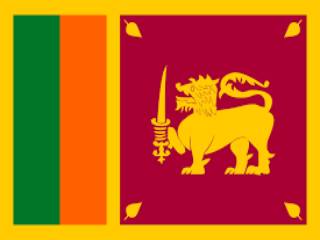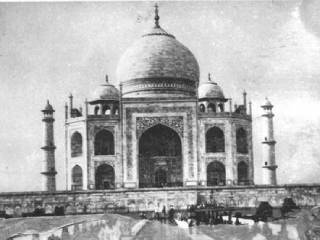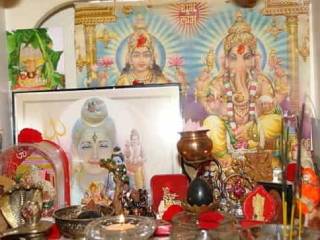Margashirsha Shuddha Ashtami, Kaliyug Varsha 5111
By S Gurumurthy:
The story of Vande Mataram first shows how, citing religious text, a society, otherwise one, could be set on the boil and divided. It also shows how, once the process of division based on a religious text starts, it does not stop at dividing a society into this or that religion. And how after the division it enters the body of the divided religious society to tear it further apart as the Pakistan situation demonstrates.
See how the advent of the song Vande Mataram, as common to both Hindus and Muslims, is captured by a Muslim writer in an Islamic website: “In 1905 came Curzon’s announcement of the partition of Bengal, and suddenly Vande Mataram turned into a national mantra, rending the skies with the protest against the partition of Bengal. Reacting quickly, the British government banned the song or even raising it as a slogan.. Peasant leader Abdul Rasul, was presiding over the Bengal Congress provincial conference session of 1906 when hundreds were struck down and grievously injured for singing Vande Mataram. This brutality at Barisal popularised the song overnight. According to Bengalee of May 23, 1906, ‘an unprecedented procession of Hindus and Muslims singing national songs and crying Vande Mataram and Allah-o-Akbar passed through all the principal streets of the town. Both Hindus and Mussalmans carried Vande Mataram flags. It is interesting to know that while Vande Mataram was banned in Bengal, the British government allowed the Bengali Regiment to attack German trenches during the First World War with Vande Mataram on their lips.”
The quote is not a century old, but is dated May 2004 (‘The history and Politics of Vande Mataram’ by Shasul Islam published in The Milli Gazette — Indian Muslims’ leading English newspaper www.milligazette.com).
The agitation against the partition of Bengal was not an accident or isolated event in respect of Muslim comfort with Vande Mataram.
The Calcutta session of the Congress in 1896, where Tagore first sang the song was presided over by Rahamatullah Sayani. The song became a regular feature in all later Congress conventions. It was again the lead hymn in Karachi in 1913 with Nawab Syed Mohammed Bahadur presiding. It was the inaugural song in the Bombay Congress in 1918 when the president was Syed Hasan Imam. Hakim Ali Khan, a founder of the Muslim League, left the League and joined the Congress in 1920 and became president of the Ahmedabad Congress at which again the song was sung as the invocation hymn. Abul Kalam Azad, who became president of the Congress in 1940, had presided over the special session of the Congress at Delhi in 1920 when the song was the inaugural hymn. In the Nagpur Congress in 1920, where, for the first time, a large number of Muslim delegates, as much as 1,050 out of 13,532, participated, Vande Mataram was as usual the lead song. M A Ansari was president of the Madras Congress in 1927 where too it was the lead song. Again, when Frontier Gandhi Khan Abdul Gaffar Khan led his redshirt Pathan Muslim volunteers into the Karachi Congress chanting Vande Mataram (See — ‘Vande Mataram and Islam’ by Aurobindo Mazumdar pp 66-71).
The solitary objection was by Maulana Mohammed Ali (at the Kakinada Congress in 1923) who termed it as idolatry — a charge that remained unsupported by anyone till Jinnah, the political, not religious, Muslim, repeated it in October 1937. Surprisingly, three years earlier Maulana Ali was present at the Nagpur Congress in 1920 when the song was sung and did not raise any objection. (ibid.p67)
Why then the perceived Islamic objection to Vande Mataram which was acceptable to the Muslims till 1937? Answer, in a couple of words: divisive politics. It was not Islamic theology, but Islamic politics, the politics of partition that targeted Vande Mataram. Curzon lured the Muslims with the partition of Bengal, and result was the birth of the Muslim League. But it remained a marginal force for almost three decades. Jinnah, who led it, had almost given up, left India and almost settled in London in 1929. He was brought back to India in 1936 to resurrect the League. Despite his efforts, the League lost the 1937 elections even in Muslim majority provinces. But a hurt Jinnah then moved into top gear to separate Muslims from Hindus. He targeted Vande Mataram in 1937 and projected it as a Hindu religious and anti-Islamic song. Jinnah’s idea was to club Hindus and India, not just to divide Hindus and Muslims. Jinnah’s aim was to show that the Congress represented only the Hindus and only the League represented Muslims.
In the next couple of years Jinnah succeeded in what he set out to do, namely, make large sections of Muslims feel they had nothing to do with Hindus, therefore with India, which Jinnah had successfully clubbed with the Hindus in the Muslim mind.
In pre-Partition India, Islamic politics smuggled itself as respectable Islamic theology. The sequence of theology-led politics divided the Darul Uloom Deoband chapter in Pakistan as Darul Uloom Karachi, and the Jamiat Ulema-i-Hind wing in Pakistan separated as Jamiat Uema-e-Islam in Pakistan.
The urge to seek text-defined purity in the faith and in the people has now made Darul Uloom Karachi and the Jamiat in Pakistan extremist in their views and part of the terrorist ideological infrastructure in Pakistan. And Pakistan, which was forged by the use of religious text for mass appeal, is now the springboard of global terrorism. So, divisive Islamic politics, which started with Vande Mataram and other icons that integrated India and Indians, did not stop at dividing Hindus and Muslims.
It has infected the body of Islamists and started dividing Muslims in Pakistan. The Muslim leaders who divided the pre-Partition Indians on the basis of their text as pure Muslims and impure Hindus now divide the Muslims in Pakistan as who, according to their text, are true Muslims and those who are not.
The Bhasmasur of Islamic separatism that Jinnah created and successfully employed against India in 1937 is testing its powers on the Islamic society in Pakistan in 2009, threatening civil war and chaos.
But, on the Indian side, Jinnah’s poison of Islamic separatism is now almost an integral part of India’s secular politics. Will Indian Islamic leaders and writers who are continuing the process of dividing Indians on the basis of what their religious texts say stop for a moment and look at what is happening inside Pakistan?
PS: Copying Muslim leaders, the Sikh body, SGPC, first opposed Vande Mataram on September 4, 2007, but, within 48 hours, it turned back and asked the Sikhs to sing the song. (http://ibnlive.in.com dated September 6, 2007).
Source: Expressbuzz.com
Also See
 |
Save temples from Anti-Hindus
Temples are the centres of Hindu Dharma. Anti Hindu forces like Muslims, Congress, Christians has constantly targetted them. HJS is fighting against these forces. |
 |
Anti faith billMaharashtra (India) government is about to pass an anti hindu bill. This draconian law that allows govt. to arrest without bail and initiate criminal proceedings against devotees and saints. |

 Mizoram: EC accepts Christians’ demand to defer counting on Sunday, but what if Hindus had made a similar demand?
Mizoram: EC accepts Christians’ demand to defer counting on Sunday, but what if Hindus had made a similar demand? Sign Petition : Immediately repeal the draconian and unconstitutional ‘The Waqf Act, 1995’
Sign Petition : Immediately repeal the draconian and unconstitutional ‘The Waqf Act, 1995’ Shriram : Sri Lanka’s saviour
Shriram : Sri Lanka’s saviour Why it is so cool to malign Hindu gods and goddesses, but it may not be that easy now
Why it is so cool to malign Hindu gods and goddesses, but it may not be that easy now Shocking Truth of Taj Mahal exposed by Late Pujya P. N. Oak
Shocking Truth of Taj Mahal exposed by Late Pujya P. N. Oak How are Hindus treated in states where they are in a minority?
How are Hindus treated in states where they are in a minority?